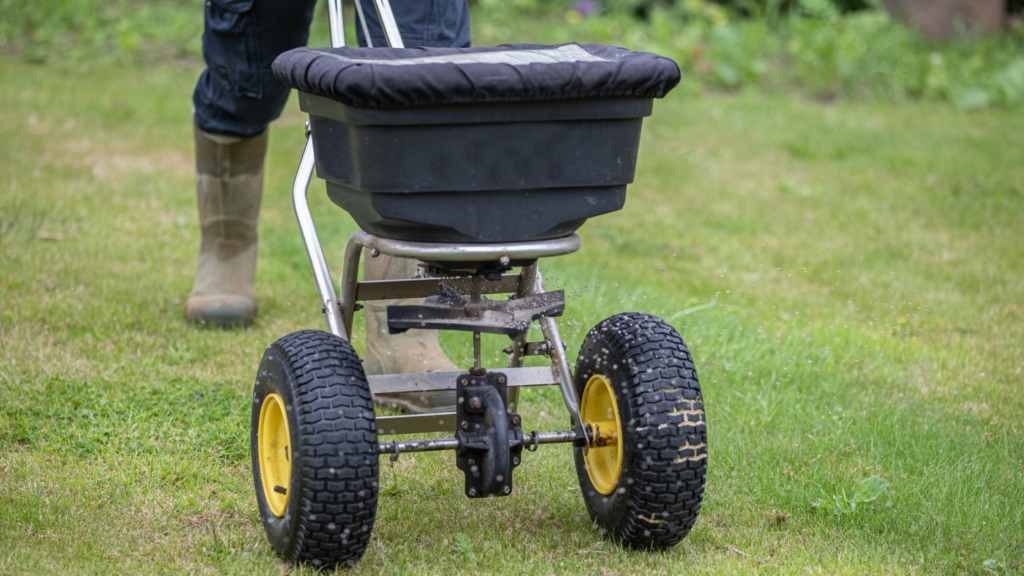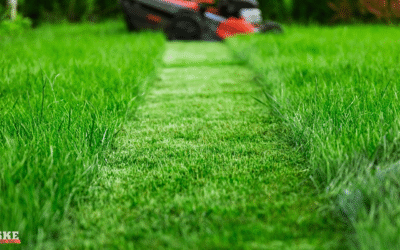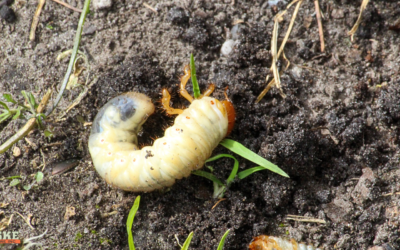As the final days of summer wind down and the crisp air of autumn starts to make its presence known, it’s time to shift our focus from pool parties and barbecues end-of-summer lawn care maintenance. The end of summer marks a crucial period for ensuring the health and vitality of your lawn as it transitions into the cooler months. By following a few simple steps, you can make sure your lawn remains lush and vibrant throughout the fall and beyond.
1. Assess and Repair
Before embarking on your end-of-summer lawn care routine, take a walk around your yard to assess its current condition. Look for signs of wear and tear, such as thinning grass, bare patches, or compacted soil. Identify any areas that might require special attention or repair.
2. Aerate
Aerating your lawn is a crucial step in maintaining healthy grass. Over the summer, the soil can become compacted due to heavy foot traffic and other activities. Aerating involves perforating the soil with small holes to allow air, water, and nutrients to penetrate deeply. This promotes root growth and overall lawn health. You can rent an aerator or hire a professional to do the job.
3. Seeding and Overseeding
Late summer or early fall is an ideal time to seed or overseed your lawn. Overseeding involves spreading grass seed over existing grass to fill in thin areas and promote a denser lawn. Choose a high-quality grass seed that is suitable for your region and lawn conditions. After seeding, keep the soil consistently moist until the new grass becomes established.
4. Fertilize
Applying a balanced fertilizer in late summer helps to strengthen your lawn’s root system and promote growth. Look for a fertilizer with a higher nitrogen content, as nitrogen encourages leaf and stem growth. Follow the manufacturer’s instructions for application rates, and be sure to water the lawn after fertilizing to help the nutrients penetrate the soil.
5. Weed Control
Weeds can quickly take over a lawn if left unchecked. As the summer comes to an end, it’s a good time to address any weed problems. Consider using a post-emergent herbicide to target existing weeds, and apply a pre-emergent herbicide to prevent weed seeds from germinating. Be cautious when using herbicides and follow the instructions carefully to avoid damaging your grass.
6. Watering
As the weather cools down, you’ll need to adjust your watering routine. Aim for deep, infrequent watering rather than shallow and frequent watering. This encourages deep root growth and makes your lawn more resilient in the face of changing weather conditions. Consider investing in a rain gauge to help you determine how much water your lawn is receiving from rainfall.
7. Mowing
Adjust your mowing height slightly higher as fall approaches. Taller grass shades the soil, helping to retain moisture and prevent weed growth. Additionally, avoid cutting more than one-third of the grass height in a single mowing session, as this can stress the grass and leave it vulnerable to disease.
8. Raking and Leaf Removal
As the leaves begin to fall, keep your lawn clear of debris. Piles of leaves can smother the grass and create an environment conducive to disease. Use a rake or leaf blower to gather fallen leaves and either compost them or dispose of them in accordance with local regulations.
By dedicating some time to end-of-summer lawn care, you’re setting the stage for a healthy and vibrant lawn in the coming months. Remember that each lawn is unique, so consider your local climate and specific grass type when tailoring your care routine. With proper attention and maintenance, you can enjoy a stunning lawn that remains the envy of the neighborhood well into autumn and beyond.
How Often Should You Mow in June? Lawn Growth Tips for Wisconsin Yards
June is prime time for lush, green lawns across Wisconsin. The combination of warm days, cooler nights, and occasional rain makes this one of the most active growing periods for cool-season grasses like Kentucky bluegrass, ryegrass, and fescue—all common in...
What’s Bugging Your Lawn? Early Signs of Spring Pest Problems in Madison, WI
As the snow melts and the grass starts growing again, many Madison homeowners breathe a sigh of relief—spring is finally here. But as your lawn begins to wake up, so do some unwanted visitors. Grubs, ants, and other lawn-damaging pests start to emerge around late...
Is Spring Coming Early? What Warmer March Temperatures Mean for Your Lawn
Madison, WI, has been experiencing some warmer-than-usual temperatures this March, leaving many homeowners wondering if spring is arriving early this year. While an early warm-up can be exciting, it also brings unique challenges for lawn care. Grass may start growing...




